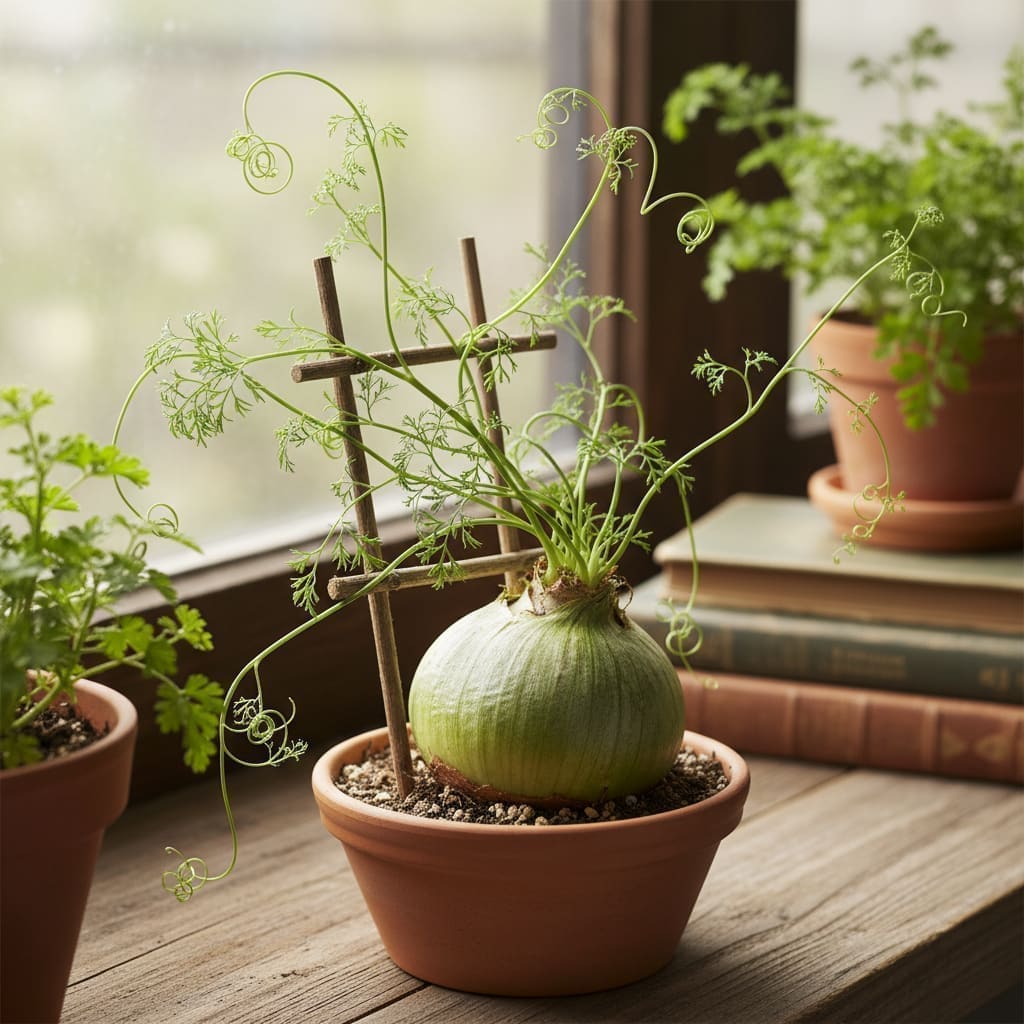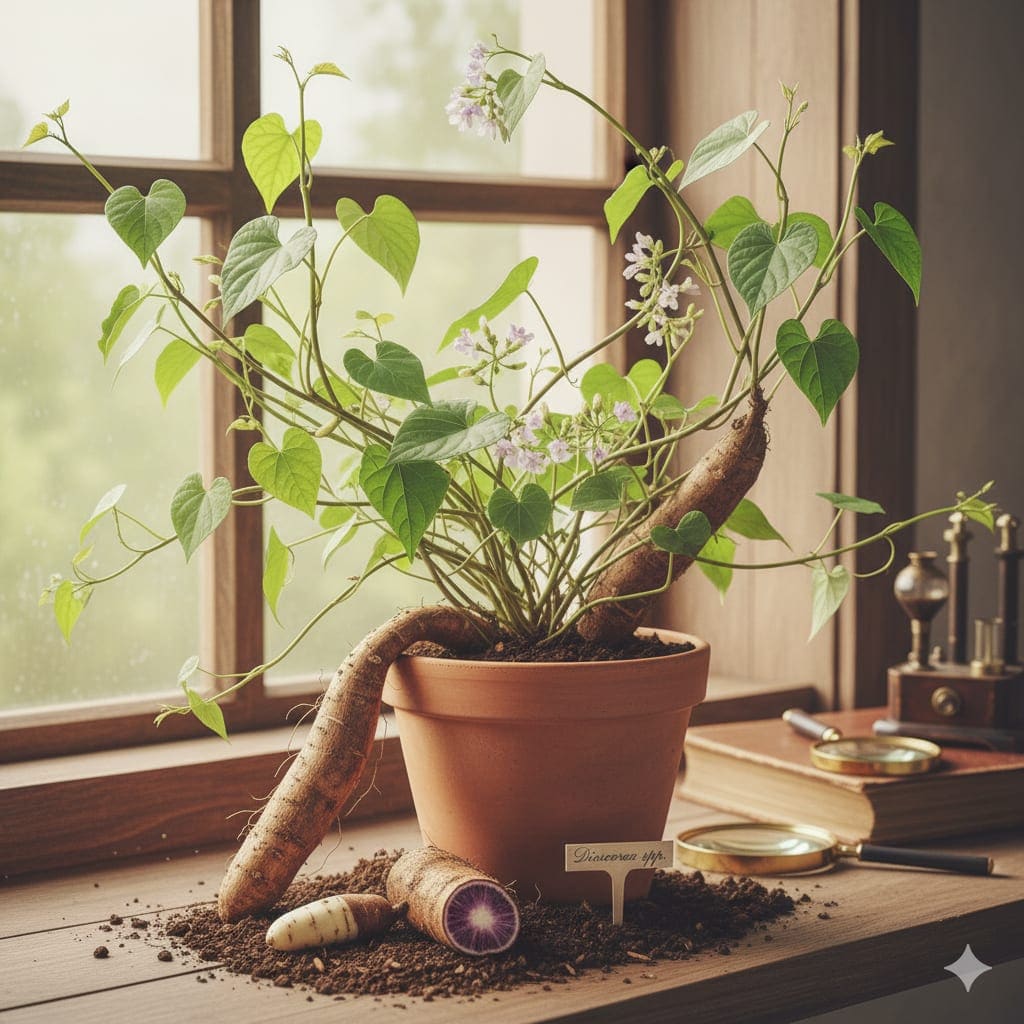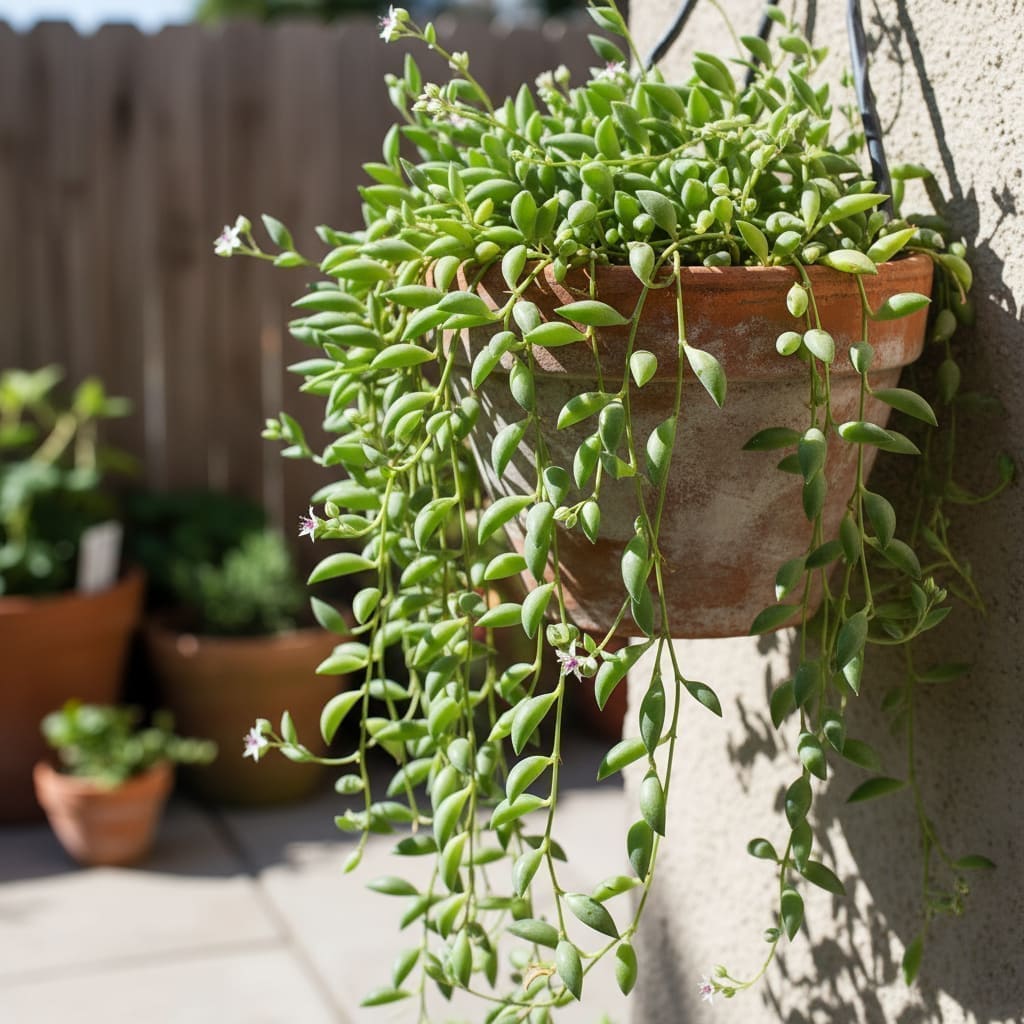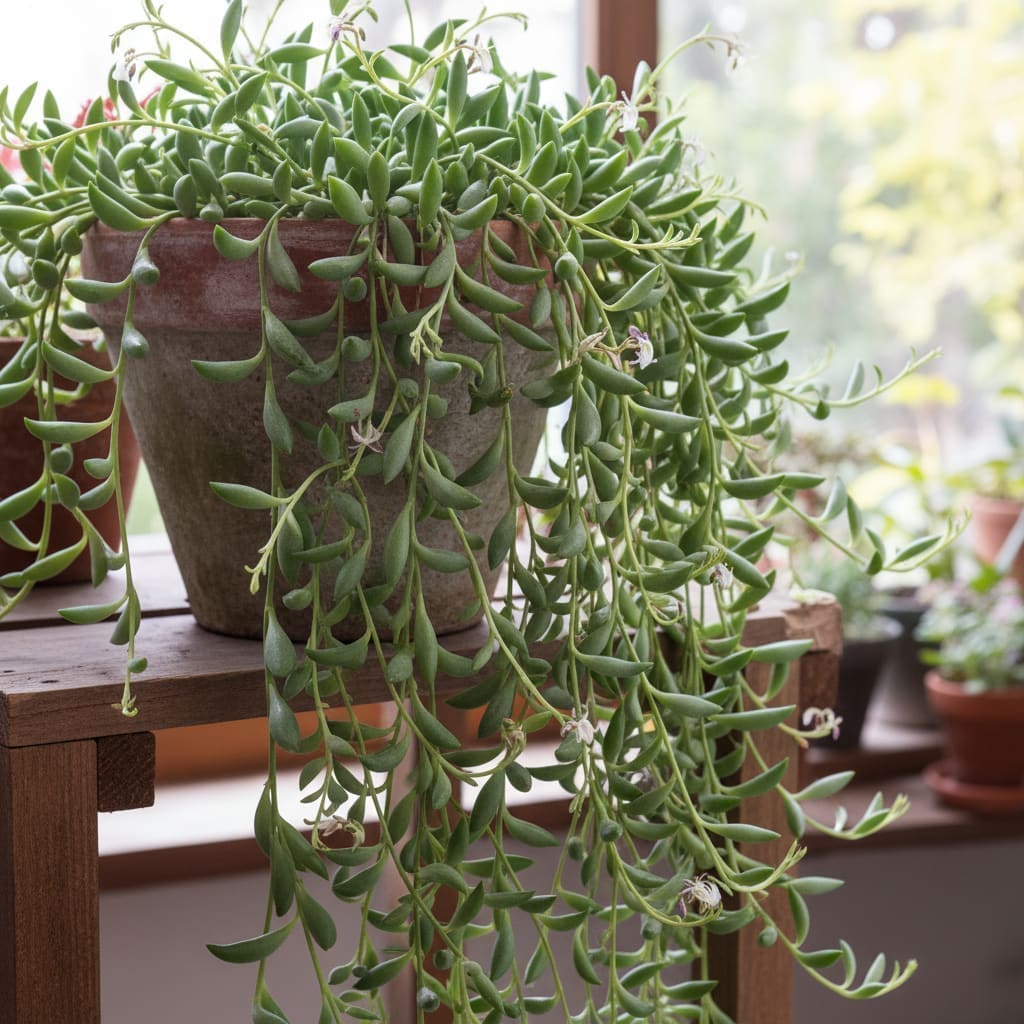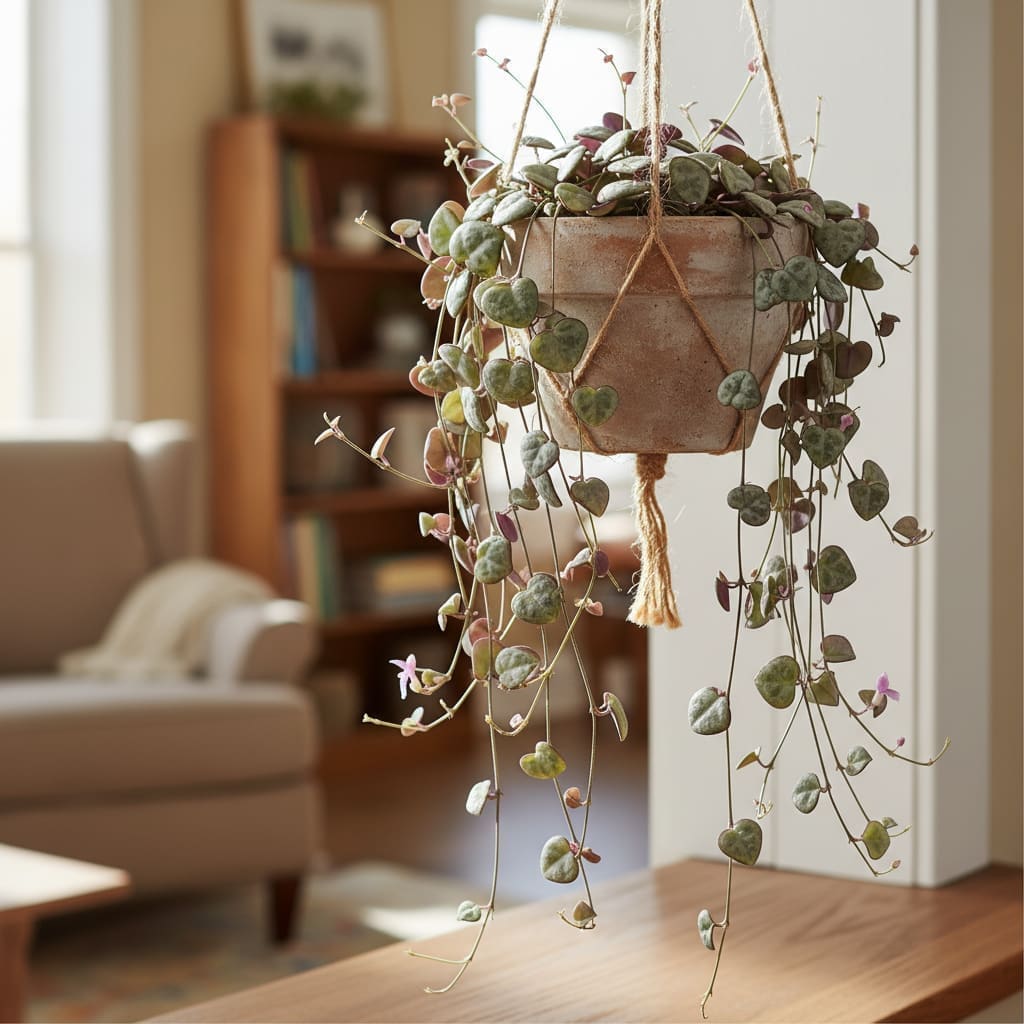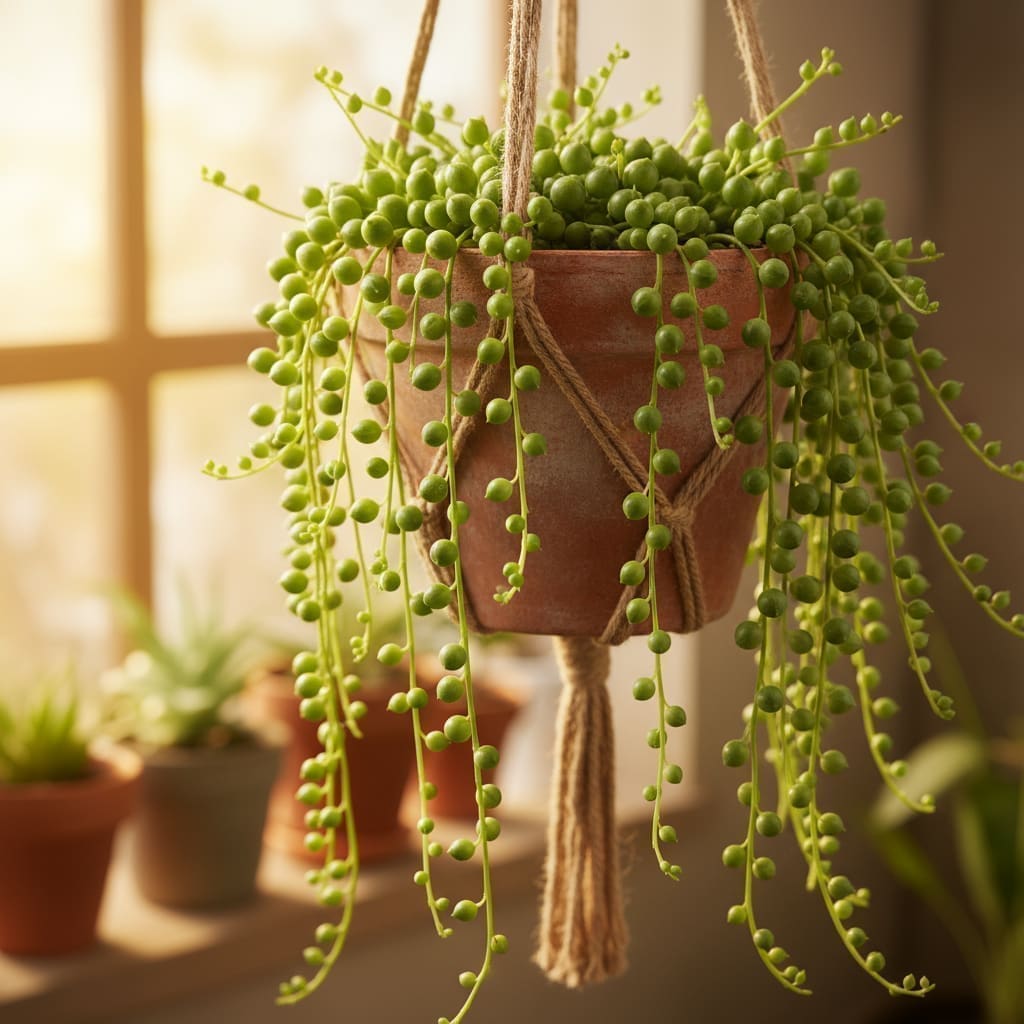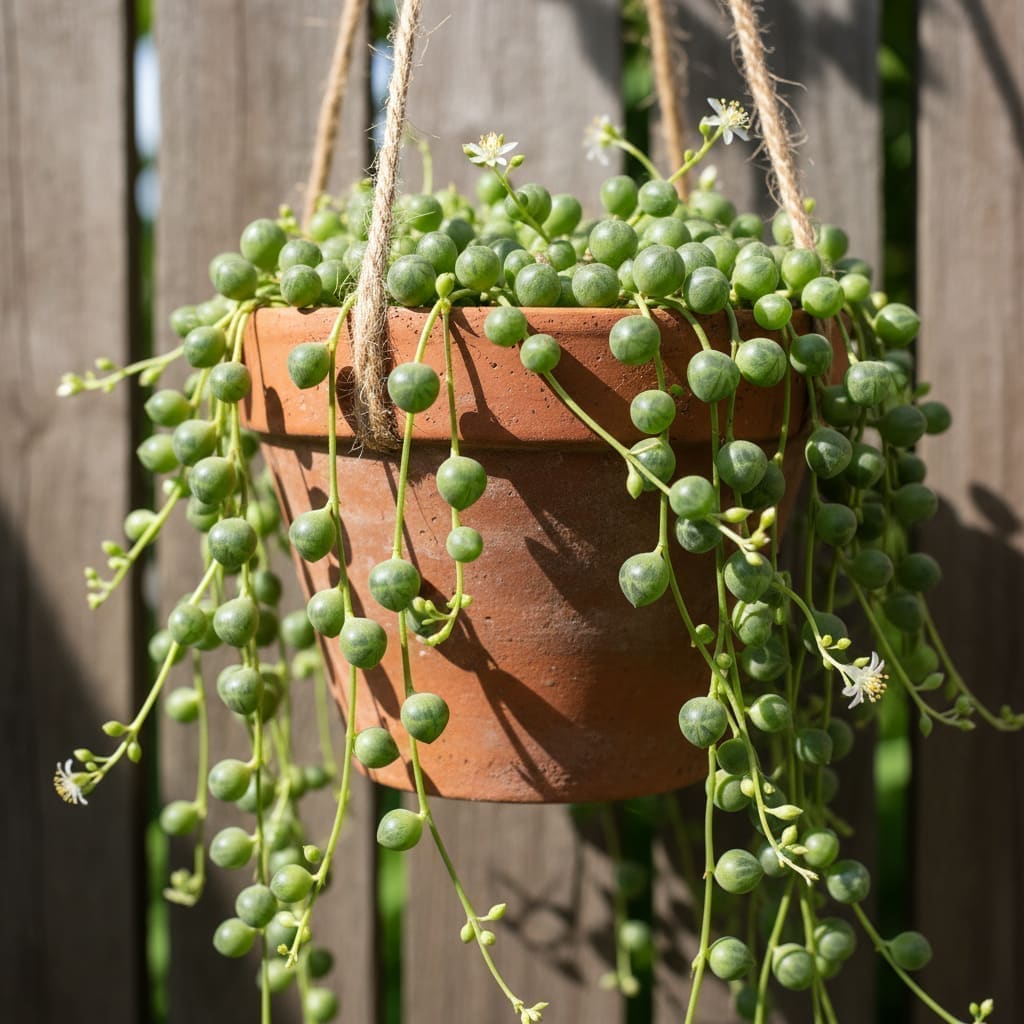Bowiea volubilis (Climbing Onion) Care & Growing Guide
Overview
Bowiea volubilis, commonly known as the Climbing Onion or Sea Onion, is a unique bulbous plant native to eastern and southern Africa, ranging from Uganda to South Africa. Despite its common name, it is not related to edible onions. This unusual species produces a green, onion-like bulb above the soil and sends out long, twining, leafless stems that perform photosynthesis. Its intriguing form and low water requirements make it a conversation piece for succulent and unusual plant collectors.
In its native habitat, Bowiea volubilis grows in rocky outcrops and well-drained soils, often going dormant during dry seasons. It is adapted to bright, indirect light and thrives indoors with minimal care when its specific needs are met.
Identification & Growth Habit
Bowiea volubilis is a trailing and climbing plant that emerges from a large, layered, green bulb. The bulb sits partially exposed above the soil surface. From the bulb, slender, twining stems grow rapidly during the active season, reaching several feet in length if supported. These stems are leafless and segmented, giving the plant its distinctive, almost skeletal appearance.
In the wild, the stems scramble over shrubs or rocks. Indoors, they can be trained to climb a trellis, moss pole, or other support. Small, star-shaped greenish flowers may appear along the stems in mature plants, typically in late spring or summer.
Light & Placement
- Light: Provide bright, indirect light. A position near an east- or west-facing window is ideal.
- Avoid prolonged direct midday sun, which can scorch the stems.
- Low light slows growth and may result in weak, elongated stems.
Outdoors in frost-free climates, Bowiea volubilis can be grown in dappled light or bright shade. Indoors, rotate the pot periodically to encourage even growth.
Watering & Humidity
This plant is adapted to arid conditions and stores water in its bulb. Water sparingly, allowing the soil to dry out completely between waterings. Overwatering is the most common cause of bulb rot.
- Active growth: Water thoroughly, then let the soil dry before watering again.
- Dormancy: Reduce watering drastically; only moisten the soil occasionally to prevent complete desiccation of the bulb.
Bowiea volubilis tolerates average indoor humidity and actually prefers the drier air found in many homes. No special humidity adjustments are necessary.
Soil & Repotting
Use a well-draining succulent or cactus mix. To improve drainage, you can mix in coarse sand or perlite. The bulb should sit partially above the soil surface to prevent rot.
Repotting is seldom needed, as the plant prefers to be somewhat pot-bound. Repot only when the bulb or offsets outgrow the container, typically every 2–3 years, in early spring before new growth begins.
Fertilizing
During the active growing season (spring and summer), feed monthly with a balanced, diluted liquid fertilizer. Avoid high-nitrogen formulas, which can promote weak, leggy growth. Do not fertilize during dormancy in fall and winter.
Pruning & Training
Pruning is minimal. Remove dead or dried stems at the base to keep the plant tidy. For training:
- Provide a small trellis, moss pole, or wire frame for the stems to climb.
- Guide young stems gently; they are flexible but can snap if bent sharply.
- Alternatively, let the stems trail from a hanging basket for a cascading effect.
Propagation
By Offsets
- In early spring, remove the plant from its pot and gently separate any small bulbs (offsets) from the main bulb.
- Ensure each offset has some roots attached.
- Plant offsets in individual pots with the same well-draining mix, keeping the bulb partially above the soil.
- Water lightly until new growth appears.
By Seed
Seed propagation is possible but slow and less common:
- Sow fresh seeds on the surface of a sandy, well-draining medium.
- Lightly cover with a thin layer of sand or fine grit.
- Keep in bright, indirect light and maintain slightly moist conditions until germination.
- Seedlings may take several years to reach maturity.
Common Problems
Pests
- Mealybugs: Look for cottony masses on stems or bulb. Treat with insecticidal soap or rubbing alcohol swabs.
- Spider mites: Fine webbing and stippled stems indicate infestation. Increase air circulation and treat with miticide if needed.
Diseases
- Bulb rot: Caused by overwatering or poor drainage. Remove affected tissue and replant in fresh, dry mix.
- Stem rot: Often due to prolonged dampness; prune affected stems and adjust watering practices.
Toxicity & Pet Safety
Bowiea volubilis is toxic if ingested by humans or animals. Keep out of reach of pets and children. Wear gloves when handling bulbs if you have sensitive skin.
Styling & Decor Tips
- Showcase the exposed green bulb in a shallow decorative pot for visual interest.
- Use a minimalist trellis to highlight the plant’s airy, lace-like stems.
- Pair with other succulent or arid-adapted plants for a cohesive display.
- Hang in a basket to allow stems to cascade naturally.
Varieties & Cultivars
Bowiea volubilis is the primary species in cultivation. There are no widely recognized named cultivars, though some plants may vary slightly in bulb size or stem vigor due to growing conditions or regional provenance.
Buying Tips & Maturity
When purchasing, look for a firm, unblemished bulb with no soft spots or signs of mold. Healthy stems should be green and turgid. Small bulbs will grow, but mature bulbs produce more vigorous climbing stems and may flower. Avoid bulbs that are shriveled or have an off odor, as these may be suffering from rot.
Seasonal Care
- Spring–Summer: Active growth; provide regular water (allowing to dry between) and monthly feeding. Train stems as they elongate.
- Autumn: Growth slows; reduce watering. Stems may yellow and die back as dormancy approaches.
- Winter: Dormant; keep in a bright, cool location and water sparingly.
FAQ
- Does Bowiea volubilis lose its stems?
Yes, the stems may die back during dormancy, leaving only the bulb visible until the next growth cycle. - Can I grow it outdoors?
In frost-free climates, it can be grown outdoors in bright shade. Protect from frost and excessive rain. - How fast does it grow?
Stems can elongate rapidly during the active season, but overall maturity from seed is slow. - Why is my bulb soft?
A soft bulb often indicates rot from overwatering or poor drainage. Remove affected parts and adjust care. - Is it suitable for beginners?
Yes, if you follow its low-water, bright-light requirements, it is relatively easy to maintain.
Source: Wikipedia – Bowiea volubilis
